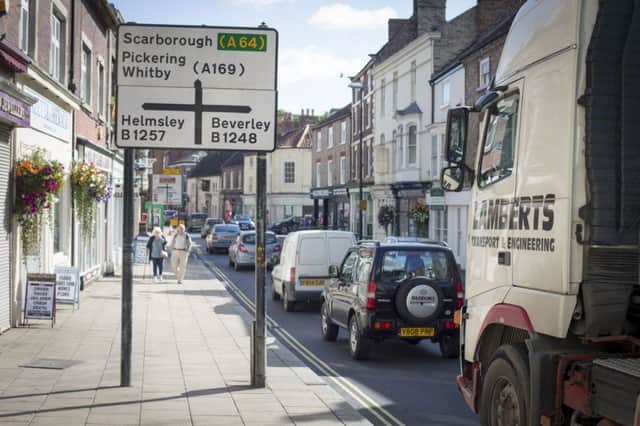Consultation launched on plans to ease congestion when Malton trains double


The level crossing on Castlegate, where the York to Scarborough line passes through the centre of Malton, is partly blamed for the gridlock in the area. The frequency of trains on the line is due to be doubled – meaning crossing barriers could be down for up to ten minutes every hour.
North Yorkshire and Ryedale councils hired consultants to sift through proposals that would ease congestion and also harvest benefits from the extra trains. The most feasible ideas form part of an consultation that goes live on Ryedale’s website today.
Advertisement
Hide AdAdvertisement
Hide AdThey include projects to improve the junction with the A64, build a second station platform at Malton and a footbridge over the railway line, and to encourage people to make shorter journeys by foot and bicycle.
Last year, another firm of consultants suggested that drivers should scrap their old cars and swap them for cleaner electric vehicles.
Coun Luke Ives, Ryedale Council’s policy chairman, said: “Congestion is already a huge concern for people in Malton and Norton, and the doubling of train services in 2019 means there’s potential for the situation to get even worse.
It’s clear the road layout around the railway crossing continues to divide opinion, and while there’s no straightforward solution, we all agree that much more needs to be done to improve the flow of traffic.
Advertisement
Hide AdAdvertisement
Hide Ad“There are a number of quick wins that could be implemented, such as signalling improvements to reduce barrier downtime.”
Coun Don Mackenzie of the county authority said: “The doubling in frequency of rail services is to be welcomed.
“However, we have to support this alongside measures to mitigate the impact of existing and future congestion on residents and businesses.”